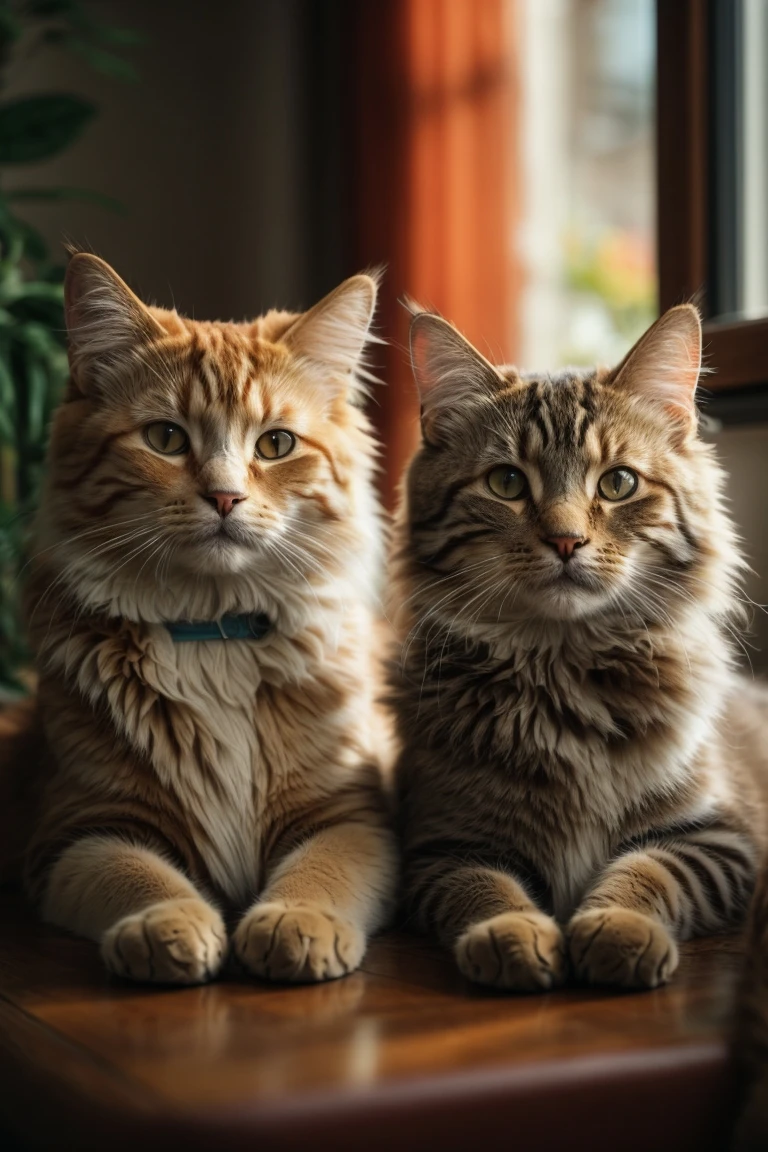The Science Behind Cat Colors and Patterns

Understanding the genetics behind a cat's coat colors and patterns can be fascinating and insightful for pet owners and breeders. While it may seem like a simple task to identify a cat's coat color, the underlying genetics are complex and involve various factors. This article will delve deep into the genetics that determine a cat's coat colors and patterns, shedding light on the intricate variations observed in domestic cats.
The Basics of Cat Genetics
Cat genetics play a significant role in determining various aspects of a cat's appearance, including its coat color and pattern. Chromosomes, inherited from both parents, contain genes that determine physical traits. Cats have 19 pairs of chromosomes, with one pair being the sex chromosomes (X and Y) that determine the sex of the cat. Females have two X chromosomes (XX), while males have one X and one Y chromosome (XY).
Genes can be dominant or recessive, influencing whether a trait is expressed. Dominant genes only need one copy to express a trait, while recessive genes need two copies. For example, the black color gene (B) is dominant over the brown color gene (b), so a cat with one B gene and one b gene (Bb) will be black.
Coat Colors and Patterns
Coat colors in cats originate from two base colors: orange and black. Variations in these colors are due to different genes and their dominance. The dilute gene lightens coat colors, resulting in shades like gray, buff, lilac, and more. The orange color gene is carried on the X chromosome, explaining why most ginger cats are male.
Tabbies
Tabbies are a foundational pattern in all cats. Whether the tabby pattern shows depends on the dominant agouti gene (A) or recessive non-agouti gene (a). Tabbies exhibit various patterns, including classic, ticked, mackerel, and spotted. The A gene creates patterns on cats' fur, while the a gene results in a solid color. All orange cats are tabbies due to the epistatic orange gene.
Pointed Patterns
Pointed patterns, found in Siamese cats, are determined by temperature-sensitive genes causing color restriction to cooler body parts. This results in darker colors on the ears, face, paws, and tail, with a lighter color on the body.
Shading Patterns
Shading patterns, like chinchilla, shaded, and smoke, involve color at the tips of the hair with a white undercoat. These patterns are influenced by the inhibitor gene (I) and its recessive allele (i).
Bicolor and Tricolor Patterns
Bicolor and tricolor patterns are influenced by the piebald white-spotting gene (S) and polygenes, resulting in various white and colored patterns. Calico and tortoiseshell cats, often perceived as feisty, have distinct color patterns due to X chromosome inactivation during embryonic development.
Personality Traits and Eye Colors
Some surveys have associated specific coat colors and patterns with particular personality traits. For example, calico and tortoiseshell cats are often perceived as feisty. However, more research is needed to establish a definitive link between coat colors, patterns, and personality traits.
Cat eye colors change as kittens grow, with only three basic eye colors but a wide variety in domestic cats. Some eye colors are linked to coat colors or patterns, such as white cats with odd eyes or Siamese cats with blue eyes.
Conclusion
The genetics behind cat coat colors and patterns are intricate and involve various genetic factors, including modifying genes and polygenes. Understanding these genetics can help pet owners and breeders identify specific cat breeds and types and may shed light on associations between coat colors, patterns, and personality traits. While some associations have been made between coat colors, patterns, and personality traits, more research is needed to establish definitive links. Nonetheless, understanding cat genetics provides a fascinating insight into the world of domestic cats and can be a valuable tool for breeders and pet owners alike.